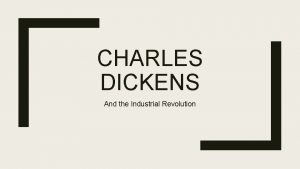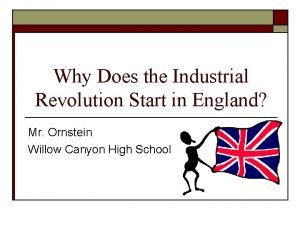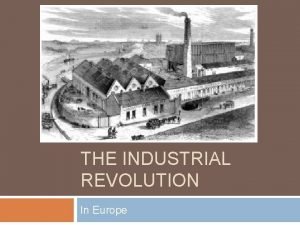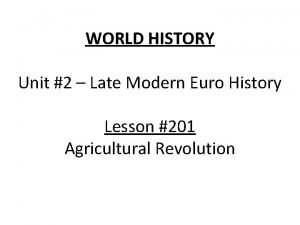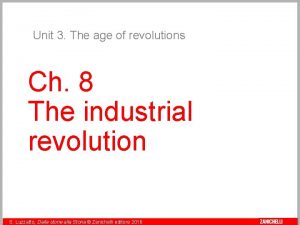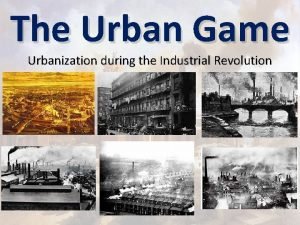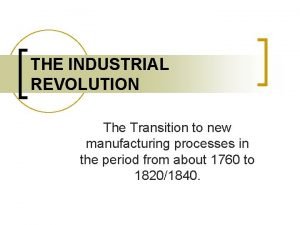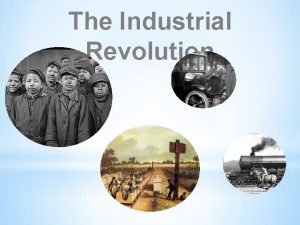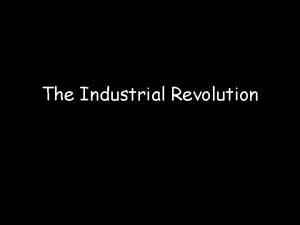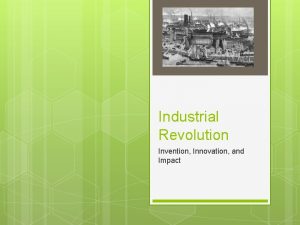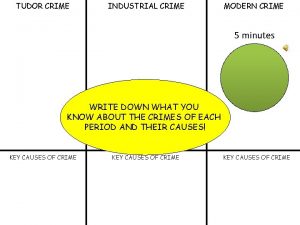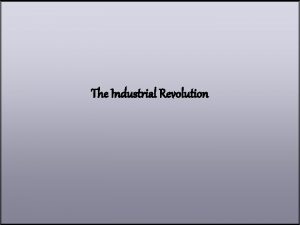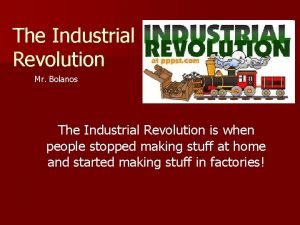How did the Industrial Revolution impact on crime














- Slides: 14

How did the Industrial Revolution impact on crime and perceptions of crime in the early C 19?

What were the main social changes brought about by the Industrial Revolution? • Use the sources to build a spider diagram of the main social changes which happened in Britain as result of the Industrial Revolution. • For each change can you predict whether you think it would have had led to a change in the amount of crime or type of crime committed/ changing attitudes towards criminals and punishment

Source 1: Towns. - In 1750 the population of England Wales was 9. 5 million. - Most people lived in villages. - By 1900 population had risen to 41. 5 million. - Most people lived in towns with poor housing and overcrowding. The commentator Engels at the time described Manchester as ‘ heaps of offal, refuse and sickening filth are everywhere and dispersed with pools of stagnant liquid. A horde of ragged women and children swarm about the streets and they are just as dirty as the pigs which wallow happily on the heaps of garbage or the pools of filth. On average 20 people live in each of these houses of two rooms, an attic and a cellar. One privy is shared by 120 people’

Source 2: An image of a London Slum in the 1800’s

Source 3: Towns ‘The terrible living poverty and living conditions in the slums caused crime and violence. There were parts of most cities where strangers would not dare to go out. , especially after dark. Robbery and murder were committed even in the ‘better’ streets. The old village-type of policing was not adequate for the towns’ (From a modern historian)

Source 4: Work In 1750 80% of people worked in the countryside. By 1900 80% worked in factories in towns and cities. An account of one weaver from Leicester who was accused of stealing a watch in 1812 revealed how factories had displaced workers by putting people out of work as they sold cloth much more cheaply than those who had made it in workshops at home: ‘I am a poor weaver in distress. I was travelling to Leicestershire, having been to London myself as a poor soldier but I was not tall enough. My parents are poor, my father out of work, and I have 8 brothers and sisters’

Source 5: Politics and protest In 1750 only one in eight men had the right to vote in a general election. Demands for change grew (inspired by French Revolution) and many riots and protests occurred over things such as toll roads, food prices, the introduction of new machinery in the early C 19. By 1885 nearly all men were able to vote (But not women). As a result governments began to make reforms such as improving housing and health, which would win them votes from ordinary people.

Source 6: politics and protest ‘In the Midlands, there was a big cottage industry in knitting. In 1800, a hand knitter could earn up to £ 1. 35 a week. But Factory owners were installing new machines that could make wider cloth. This was then cut up to make stockings – the cottage workers could just not compete; wages fell sharply, while food costs were rising. So the cottage workers fought back. In 1811 organised gangs set about smashing new machines. In one year alone, they destroyed about 1000 of them’ From a modern historian

Source 6: Acceptance of government intervention ‘For centuries the British people had resisted the government meddling in local affairs or telling town or rural councils what to do. They had resisted any attempts by the government to raise money. In the early C 19 governments were increasingly involved in reforming and changing Britain. Part of the reason was the long French War which had forced the government to raise money Governments were now raising more money in taxes and also allowing local authorities to raise local taxes to such as those paid for by the police. ’

Main social changes brought about by Industrial Revolution

How did the Industrial Revolution impact on the Crime rate in early C 19 (up to 1850)?

How did the type of crime change? • Minor crime still accounted for 75% of all recorded crime. • Only 10% involved violence • Murderers were rare – victims knew murderer normally. • The significance was not so much the increase in crime but rather the increased fear and perception of crime and criminals amongst the Victorian Middle classes and ruling classes.

How and why did Victorian perceptions of criminals change between 1830 and 1890? • The impact of the Industrial Revolution on Victorian Attitudes towards crime and criminals is even more important to understand than the statistical increase in crime that we know probably took place. • It is the changing attitudes and perceptions of crime and criminals that led to changes in punishments, the introduction of the police force etc. • One half of the class will investigate and feedback on Victorian attitudes towards crime in the early C 19. The other half will the same for late C 19

Early 1800’s Attitudes towards criminals Reasons for these attitudes Late 1800’s
 How did charles dickens impact the industrial revolution
How did charles dickens impact the industrial revolution Industrial revolution crime
Industrial revolution crime Did american revolution cause french revolution
Did american revolution cause french revolution Why did the industrial revolution start in britain
Why did the industrial revolution start in britain How did classical liberalism help the industrial revolution
How did classical liberalism help the industrial revolution Cottage industry
Cottage industry Russian revolution vs french revolution
Russian revolution vs french revolution Green revolution vs third agricultural revolution
Green revolution vs third agricultural revolution Enclosure movement
Enclosure movement Zanichelli
Zanichelli Industrial revolution drawing
Industrial revolution drawing Enclosure movement industrial revolution
Enclosure movement industrial revolution Putting-out system
Putting-out system Industrial revolution transition
Industrial revolution transition Industrial revolution quiz
Industrial revolution quiz
